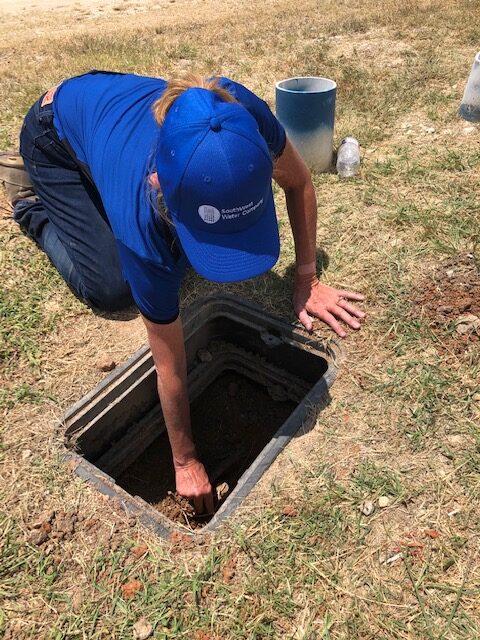
Katie Zheng, planning manager for SouthWest Water Company, Texas Utilities.
In 2015, the United Nations General Assembly declared February 11 as the International Day of Women and Girls in Science, in an effort to achieve equal access to science for women and girls. Overall, women are underrepresented in STEM-related fields, and the water utility sector remains male dominated. A report by the World Bank’s Water Global Practice reveals that less than one in five water workers are women, and that only 18% of technical and leadership roles in the sector’s workforce are held by women. This is due, in part, to the significant difference in STEM degrees held by men and women. According to the American Association of University Women, men outnumber women in nearly every science and engineering field, and women hold only 20 percent of bachelor’s degrees in fields such as physics, engineering and computer science.
As we approach this day meant to inspire equal opportunities for education and careers in science, I want to encourage women and girls to consider pursuing careers in the water industry. Water is critical to our health and safety in good times, and in bad.
I saw firsthand the importance of clean, reliable water during a crisis many years ago. When I was young, there was an explosion that led to a benzene spill at a petrochemical plant upstream from my hometown in Northeast China, and it contaminated our major source of surface water. Four million people didn’t have access to the municipal water system for five days until the pollutant concentrations in the river had declined below permissible levels. I watched a group of engineers and scientists clean the river and restore potable water to our community and was inspired by their admirable work. I decided in that moment to pursue environmental engineering. Now we are facing a global crisis and are relying on utility workers to keep safe, reliable water running during the COVID-19 pandemic. The first step in preventing the spread of the virus is to wash hands thoroughly. Without our precious resource, this is difficult to do.
“Given the current public health crisis, providing clean water is more important than ever and now is a good time to pursue a career in the water industry where people can make a difference.”
The Texas water industry faces a looming workforce shortage, especially for workers involved in the daily operations of water and wastewater plants. As a generation of water and wastewater operators near retirement and new development continues in Texas, it could become more difficult and costly to provide safe drinking water and to protect the state waterways from pollutants if we don’t recruit new talent to our industry.
As the co-chair of the Workforce Development Committee at the Water Environment Association of Texas (WEAT), I work to promote water career awareness across the state. Our goal is to support a diverse range of people entering the water utility workforce at multiple stages in order to create a “pipeline” of water workers. While the water industry is encouraging women and diverse workers to get involved in STEM-related fields and assume leadership roles, work is still needed to help bridge this gap. I urge women to join professional organizations and mentorship programs that support these efforts.
For those interested in working in the water sector, many high schools and community colleges offer on-the-job training programs that are accredited by the Texas Commission on Environmental Quality (TCEQ). Now is an opportune time for students and recent graduates to explore these programs as water operators are essential workers who can earn competitive wages, face lower educational barriers to entry, develop extensive knowledge and cross-disciplinary skills, and have the ability to work independently in the field. Given the current public health crisis, providing clean water is more important than ever and now is a good time to pursue a career in the water industry where people can make a difference.
I hope that the tireless efforts of frontline workers during this crisis will inspire women and girls across the state to pursue careers in STEM, in the same way they inspired me. For more information about advancing women in STEM, visit the Association for Women in Science.